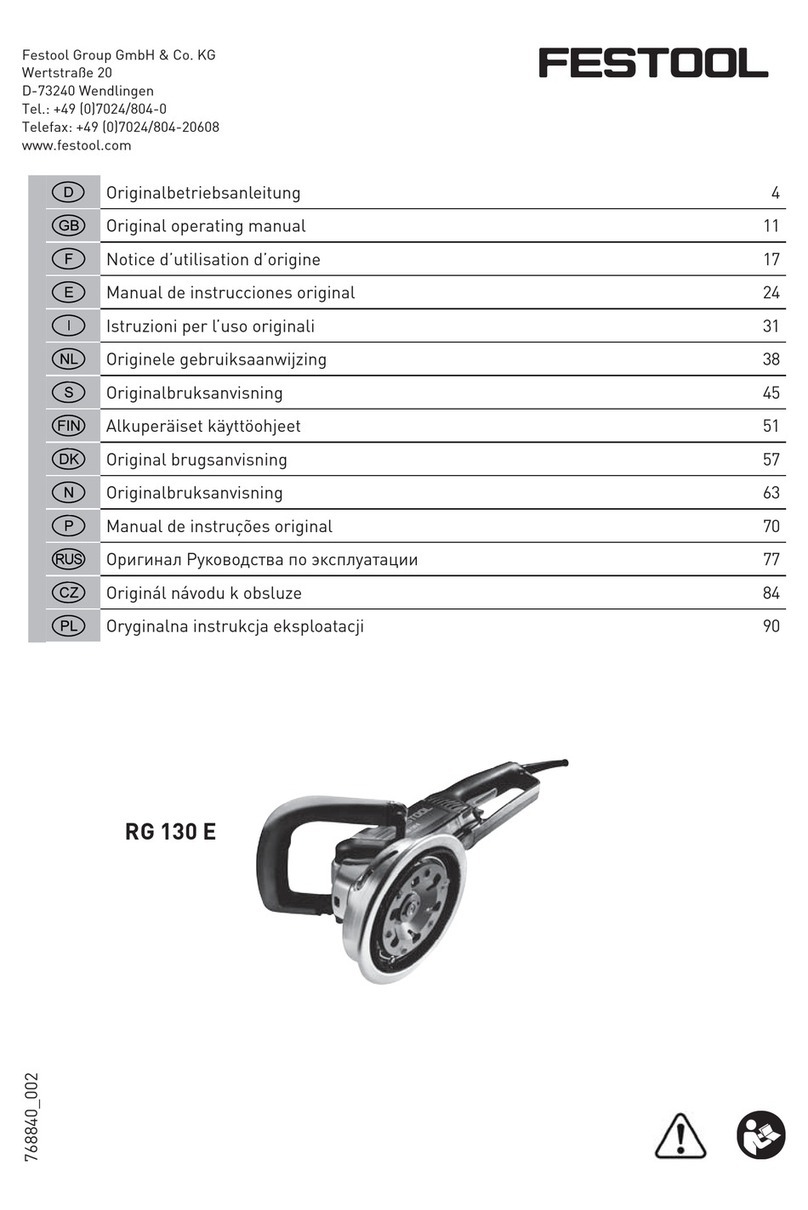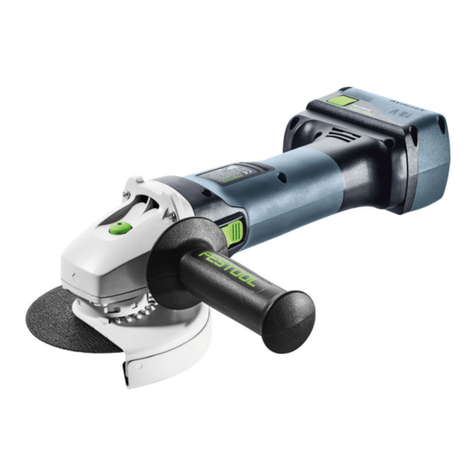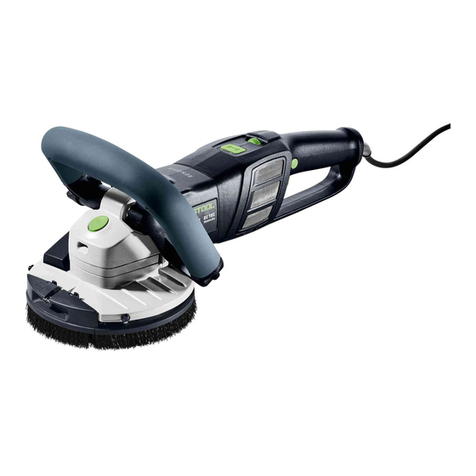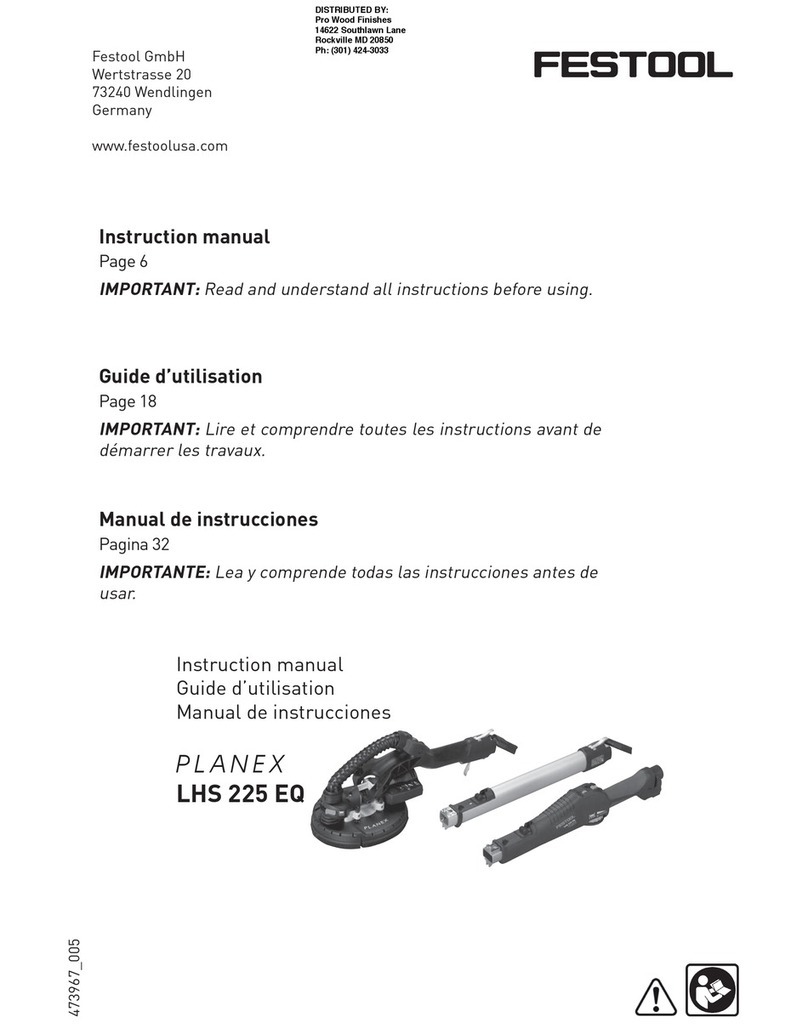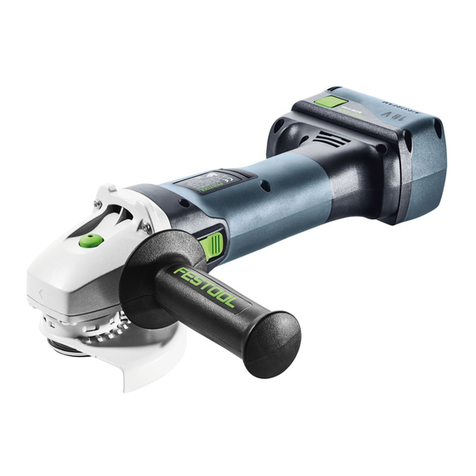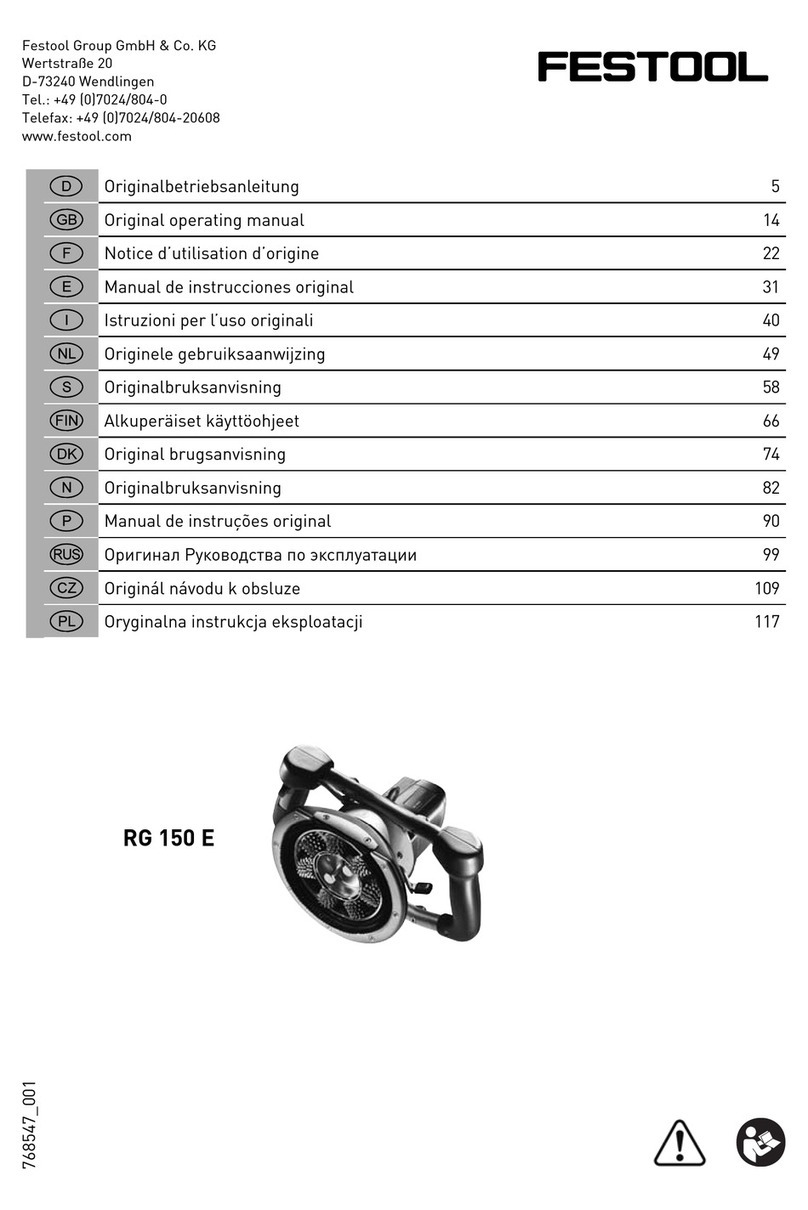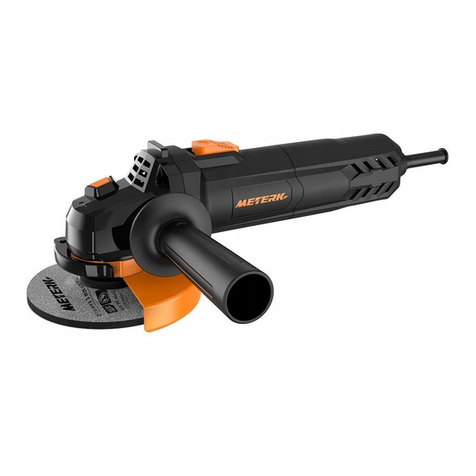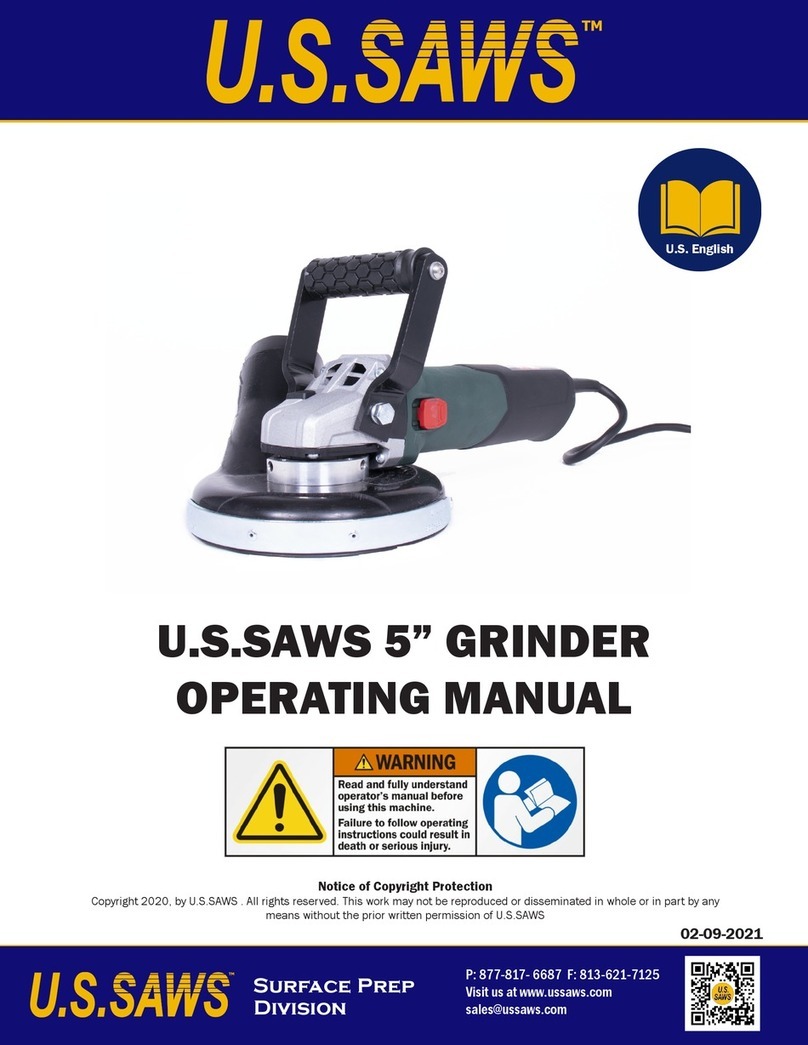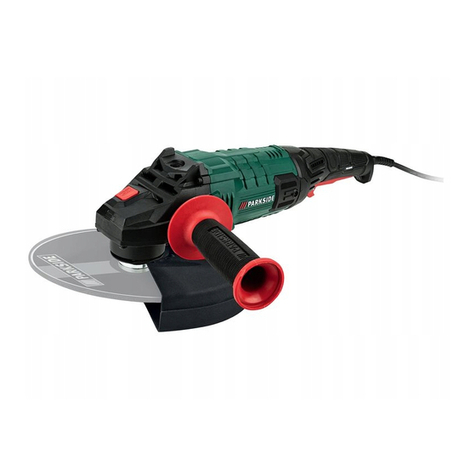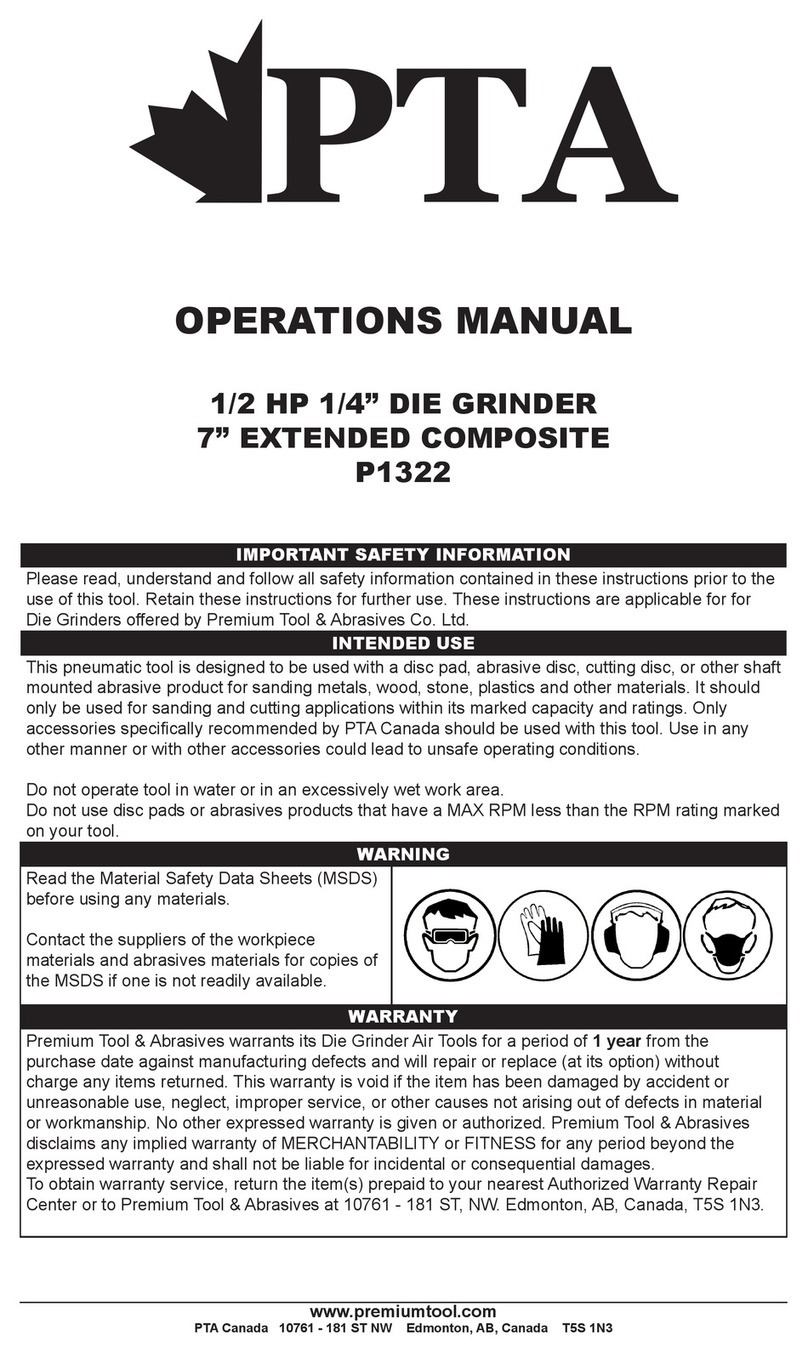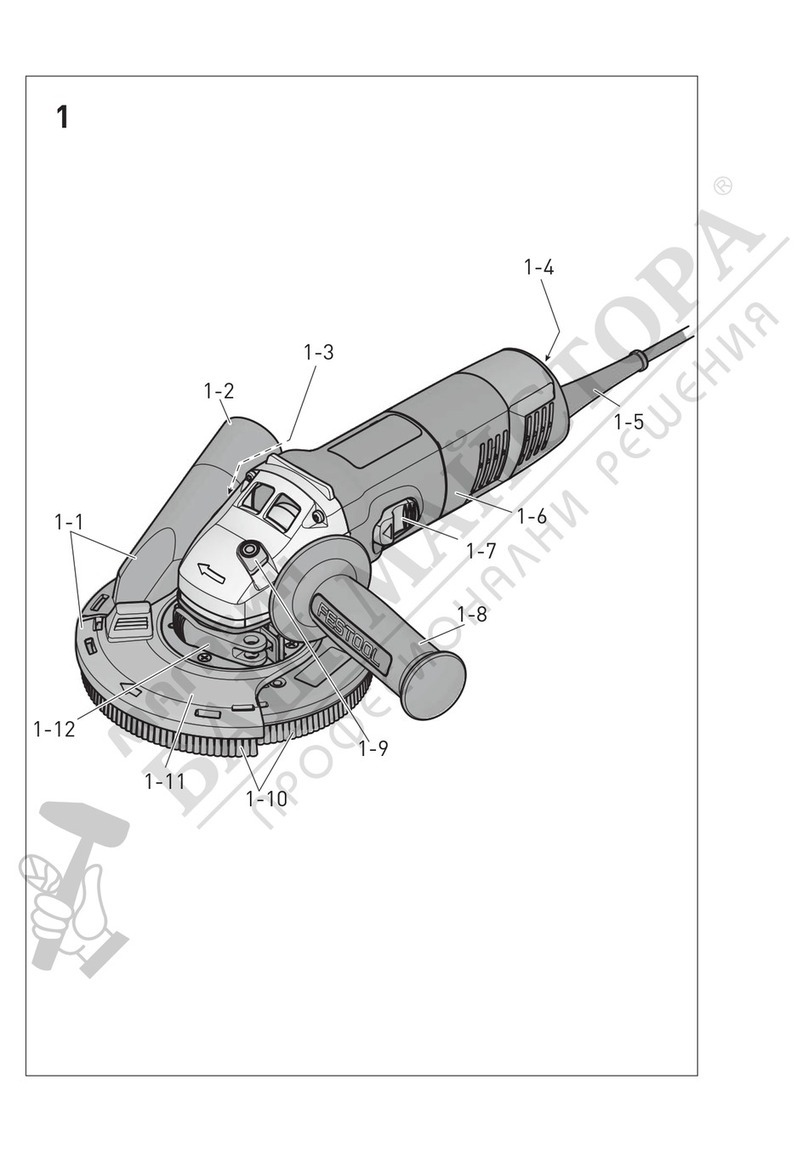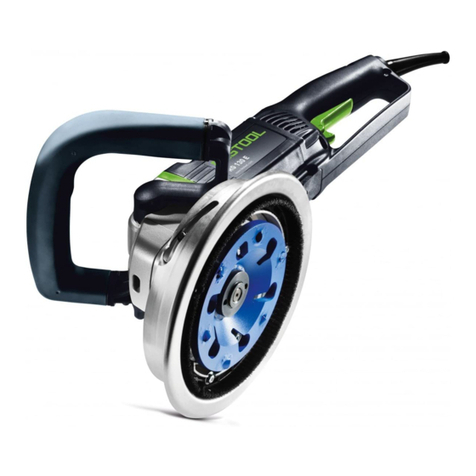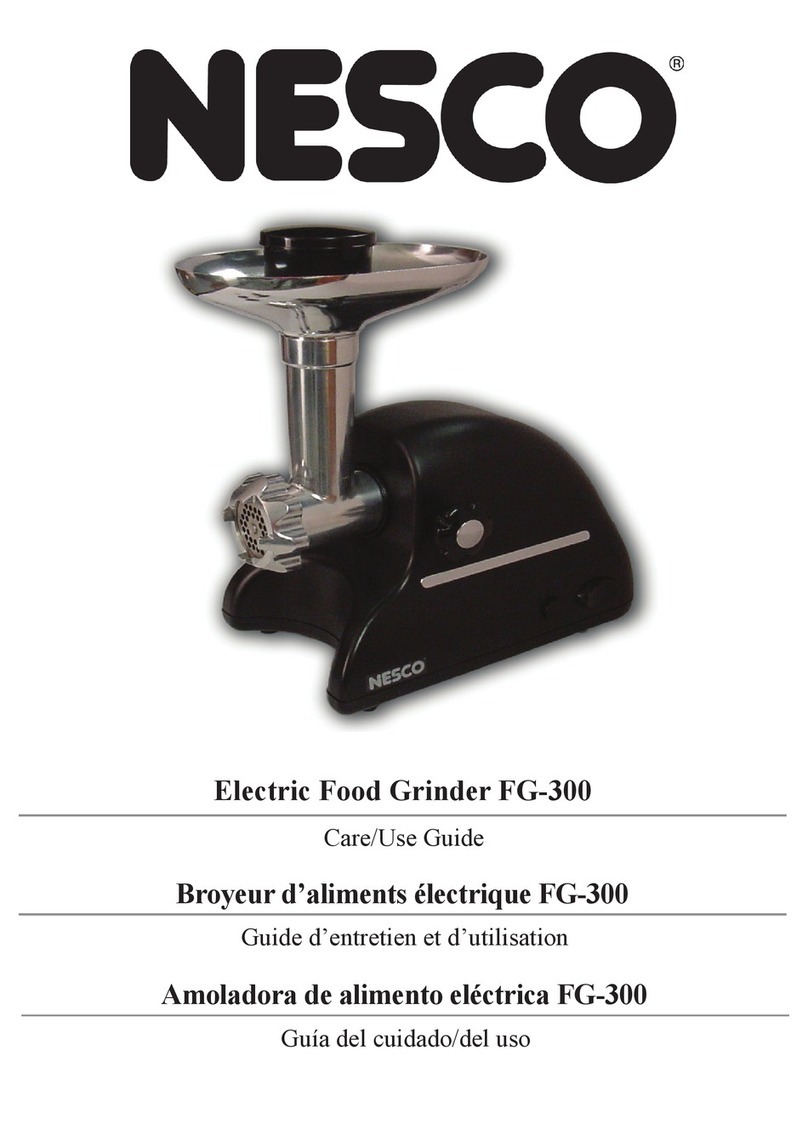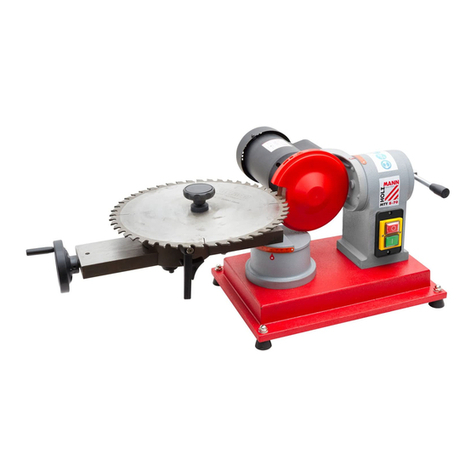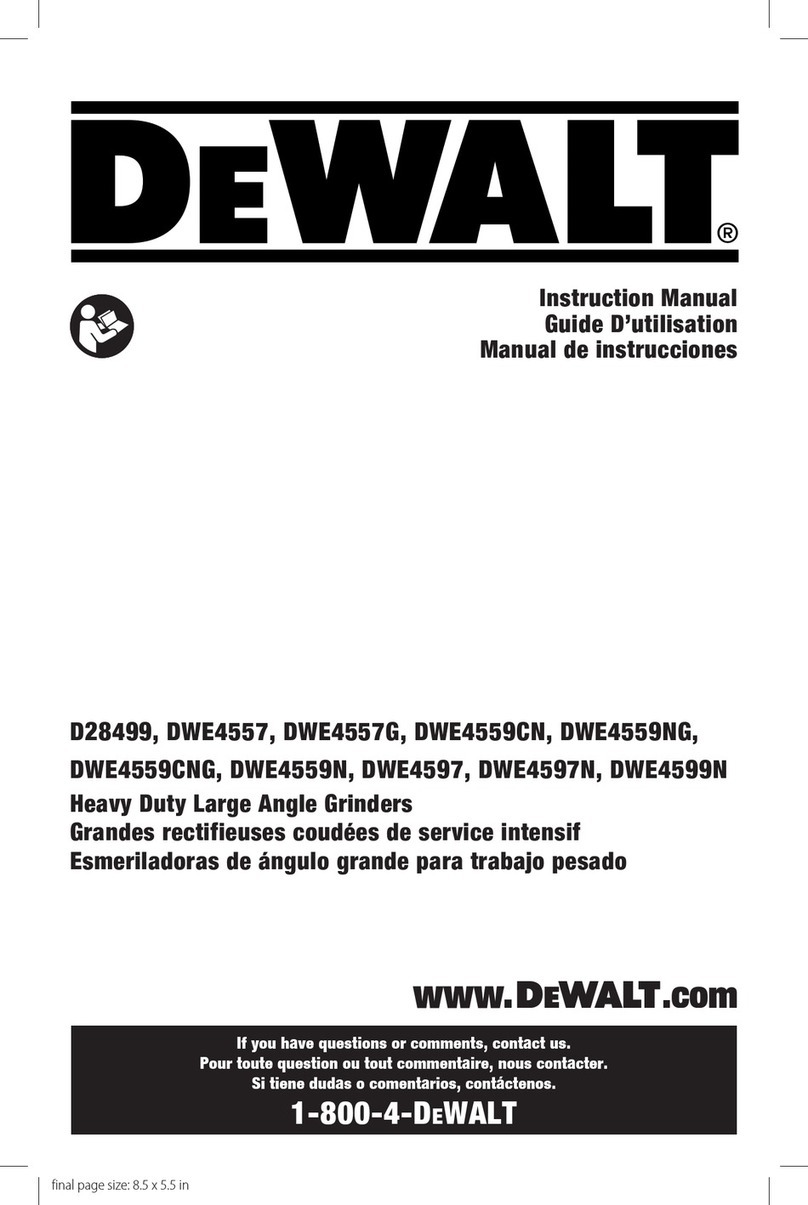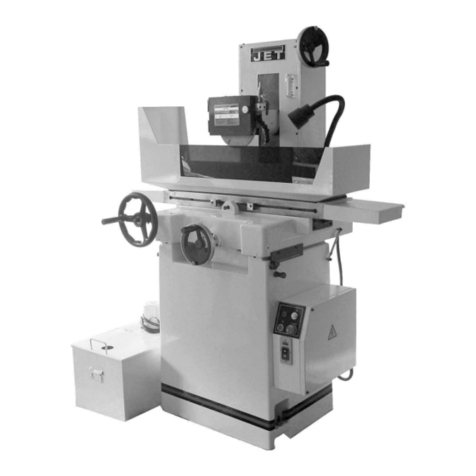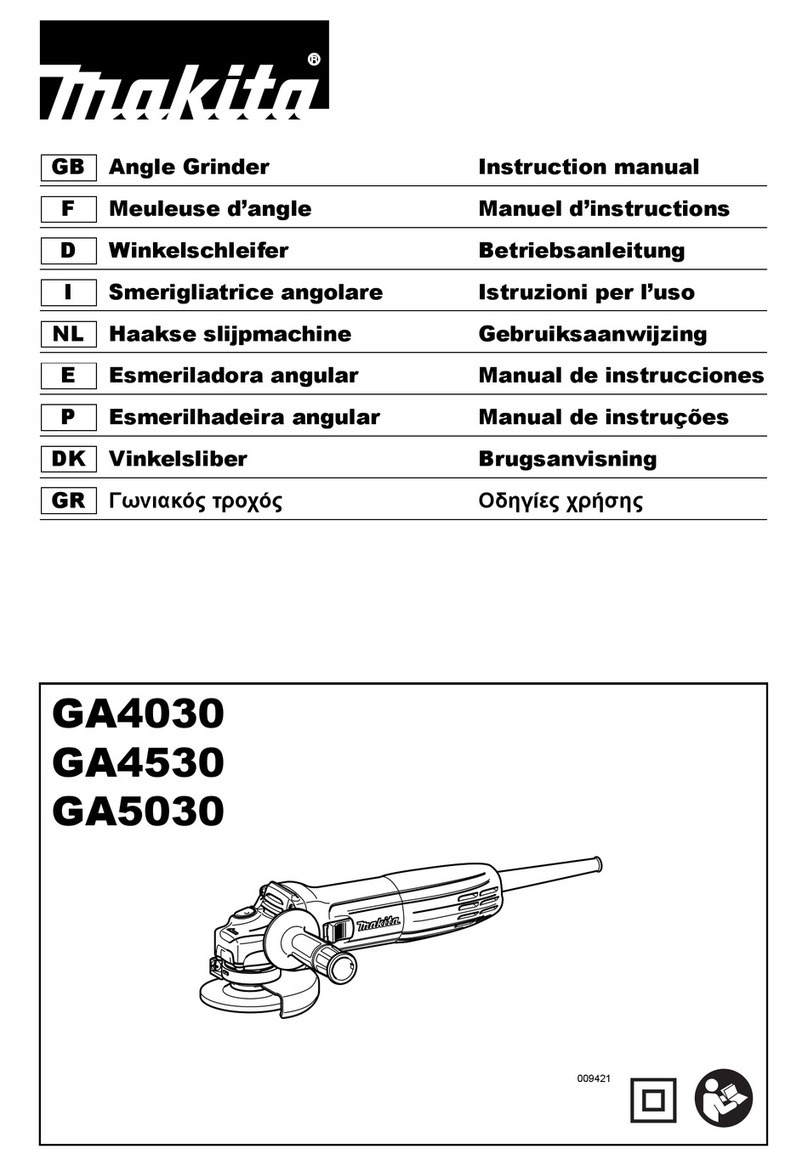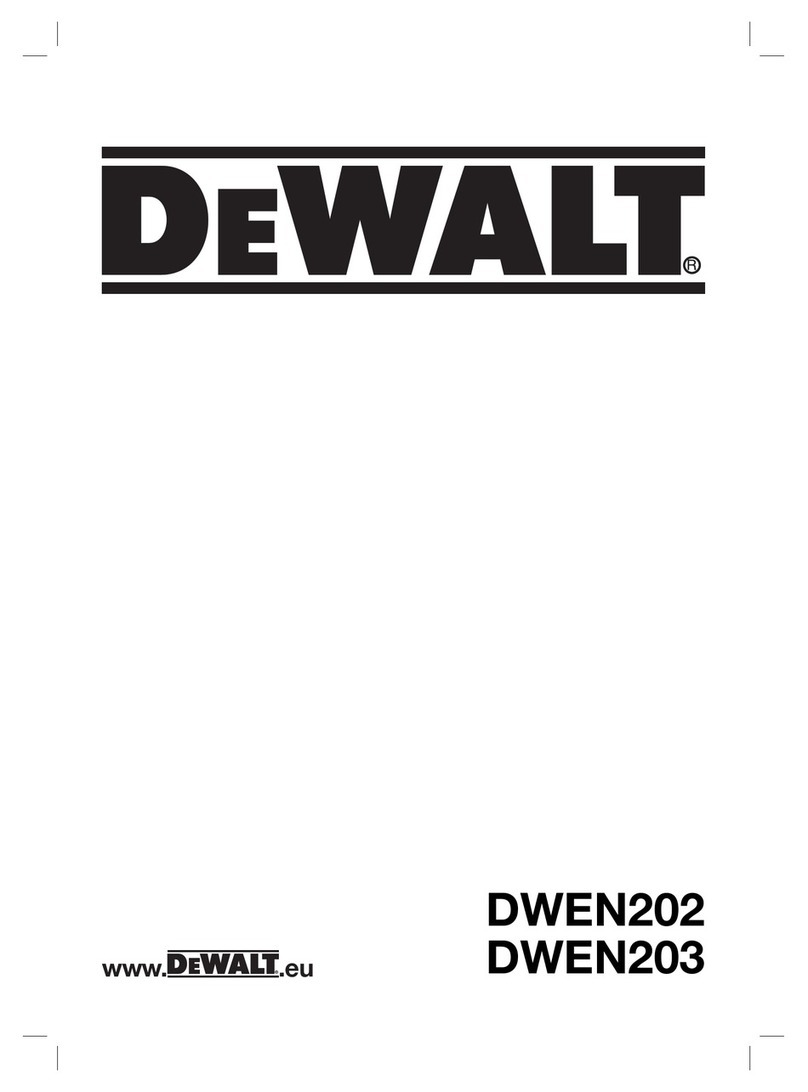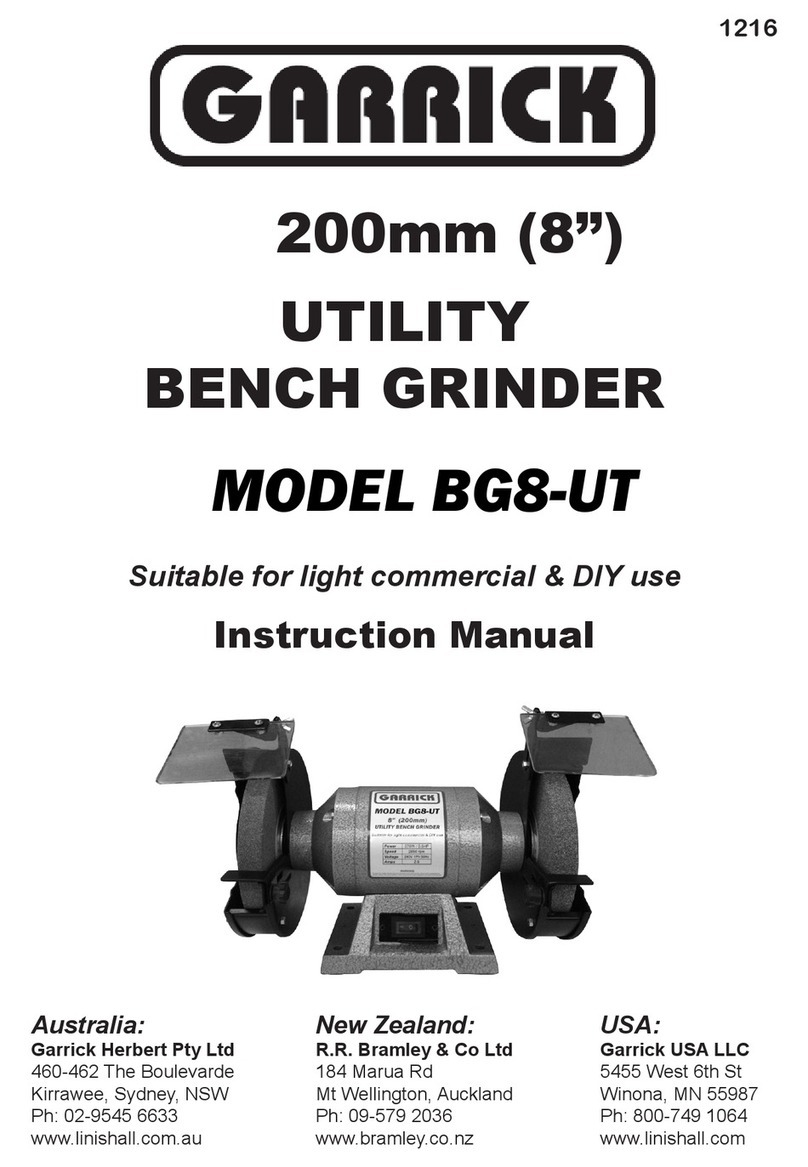
ventive safety measures reduce the risk of
starting the power tool accidentally.
d. Store idle power tools out of the reach of
children and do not allow persons unfami
liar with the power tool or these instruc
tions to operate the power tool. Power
tools are dangerous in the hands of un
trained users.
e. Maintain power tools and accessories.
Check for misalignment or binding of mov
ing parts, breakage of parts and any other
condition that may affect the power tool’s
operation. If damaged, have the power
tool repaired before use. Many accidents
are caused by poorly maintained power
tools.
f. Keep cutting tools sharp and clean. Prop
erly maintained cutting tools with sharp
cutting edges are less likely to bind and are
easier to control.
g. Use the power tool, accessories and tool
bits etc. in accordance with these instruc
tions, taking into account the working con
ditions and the work to be performed. Use
of the power tool for operations different
from those intended could result in a haz
ardous situation.
5 Battery tool use and care
a. Recharge only with the charger specified
by the manufacturer. A charger that is
suitable for one type of battery pack may
create a risk of fire when used with another
battery pack.
b. Use power tools only with specifically des
ignated battery packs. Use of any other
battery packs may create a risk of injury
and fire.
c. When battery pack is not in use, keep it
away from other metal objects, like paper
clips, coins, keys, nails, screws or other
small metal objects, that can make a con
nection from one terminal to another.
Shorting the battery terminals together
may cause burns or a fire.
d. Under abusive conditions, liquid may be
ejected from the battery; avoid contact. If
contact accidentally occurs, flush with wa
ter. If liquid contacts eyes, additionally
seek medical help. Liquid ejected from the
battery may cause irritation or burns.
6 SERVICE
a. Have your power tool serviced by a quali
fied repair person using only identical re
placement parts. This will ensure that the
safety of the power tool is maintained.
3.2 Machine-specific safety notices
General safety warnings for sanding, wire
brushing and abrasive cutting
–This power tool is designed to be used as a
sander, wire brush and abrasive cutting
machine. Read all safety warnings, infor
mation, illustrations and technical data
enclosed with the tool. If the following in
structions are not observed, this may lead
to electric shock, fire and/or serious inju
ries.
–This power tool is not suitable for sanding
using sandpaper or polishing. Applications
for which the power tool is not intended can
pose a serious risk and cause injuries.
–Do not use accessories which are not spe
cifically designed and recommended by
the tool manufacturer. Just because the
accessory can be attached to your power
tool, it does not assure safe operation.
–The rated speed of the accessory must be
at least equal to the maximum speed
marked on the power tool. Accessories
running faster than their rated speed can
break and fly apart.
–The outside diameter and the thickness of
your accessory must be within the capaci
ty rating of your power tool. Incorrectly
sized accessories cannot be adequately
guarded or controlled.
–Threaded mounting of accessories must
match the grinder spindle thread. For ac
cessories mounted by flanges, the arbour
hole of the accessory must fit the locating
diameter of the flange. Accessories that do
not match the mounting hardware of the
power tool will run out of balance, vibrate
excessively and may cause loss of control.
–Do not use a damaged accessory. Before
each use inspect the accessory such as
abrasive wheels for chips and cracks,
backing pad for cracks, tear or excess
wear, wire brush for loose or cracked
wires. If power tool or accessory is drop
ped, inspect for damage or install an un
damaged accessory. After inspecting and
installing an accessory, position yourself
and bystanders away from the plane of the
rotating accessory and run the power tool
at maximum no-load speed for one mi
nute. Damaged accessories will normally
break apart during this test time.
English
8

